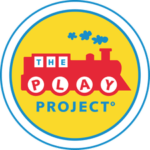An overview of Autism
Written by Ashley Cunningham, RN BSN
Autism. What does it really mean? The DSM-5 or Diagnostic and Statistical Manual of Mental Disorders, defines autism as persistent deficits in social communication and social interaction across multiple contexts (1). Autism has many different presentations and affects one individual in a different way than the next. Autism symptoms vary greatly and that is why it is classified as a spectrum disorder. An even better way to describe autism spectrum disorder is that the brain is just put together in a different way. This comes with great differences in speaking, motor function, socialization, thinking, and playing. The way brains are put together differently can account for why there are different presentations of autism. What causes autism then? The answer to this is there is not one single cause of autism but a multitude of factors such as genetics, environment, and brain pathology.
Prevalence
Autism Spectrum Disorder (ASD) affects an estimated 1 in 68 children (2). But what has caused this prevalence? Why are children now being diagnosed with autism so much more than say your great-grandparents generation? The answer is complex but has much to do with the fact that early intervention and screening is now at the forefront of medicine. Prior to the 1980s, autism was not relatively talked about or diagnosed. With the help of increased education, diagnostic criteria, and guidelines in place, Autism Spectrum Disorder is more approachable in diagnosing. A few decades ago, child psychiatrists and psychologists were lost in how to diagnose this spectrum disorder, so fewer children were being diagnosed.
Debunking Myths
Do vaccines cause autism? The short answer to that is no. In 1998, a research study was published in The Lancet that 8 children developed autism one month after receiving the MMR vaccination, (measles, mumps, rubella) (4). However, this study was not only retracted from the journal it was published in, but it had no scientific backing or support (3). The Center for Disease Control has stated that there is no link between vaccines and autism. The CDC conducted an updated study that did not show a link with vaccines and autism in 2013 (3). Over nine conducted research studies have been completed since 2003 with the CDC that have demonstrated that vaccines do not contribute to an autism diagnosis (3).
What’s to Come with Research
Autism research is currently underway in many different institutions and facilities around the United States and the world. The application of early intervention and inventive treatments is at an all-time high!
- Neuroimaging techniques may help predict autism among infants. Functional connectivity magnetic resonance imaging (fcMRI) may predict which high-risk, 6-month-old infants will develop ASD by 2 years old. This brain imaging helps separate brain images into autism or non-autism groups. This type of brain imaging could be used for future diagnosing of autism and help understand the brain with autism better in the future (5).
- New advances in the field of genomics have taken underway in regards to autism and genetic causes. Whole genome sequence resource identifies 18 new candidate genes for (ASD). Being able to identify genes that could potentially contribute to ASD can help improve diagnosing and assessment of the spectrum disorder (6).
- More research is being done to assess the best interventions for children with ASD. Currently, studies have demonstrated that parent-mediated interventions have been shown to provide benefit for these children (7). In one particular study, providing a parent-mediated intervention to children who were at risk for developing ASD proved to have some treatment response to the parent intervention (7).
These are only a few of the studies currently being conducted in regards to autism research!
What OhioGuidestone Has to Offer
OhioGuidestone currently provides screening, diagnosing, and interventions for clients with autism. Based on research (and currently happening!) interventions based on play and that involve the parent have helped children with autism. The Play Project is a current program OhioGuidestone provides for families. The Play Project is a parent implemented intervention for early intervention of autism (8).
•••
References
1. American Psychiatric Association. (2013). Diagnostic and statistical manual of mental disorders (5th ed.). Washington, DC: American Psychiatric Association.
2. Center for Disease Control. (2017). Autism spectrum disorder. Retrieved from https://www.cdc.gov/ncbddd/autism/index.html
3. Center for Disease Control. (2015). Vaccine safety. Retrieved from https://www.cdc.gov/vaccinesafety/concerns/autism.html
4. Stanley Plotkin, Jeffrey S. Gerber, Paul A. Offit; Vaccines and Autism: A tale of shifting hypotheses. Clinical Infectious Diseases, (48) 4,456–46. https://doi.org/10.1086/596476
5. Emerson, R.W. et al. (2017). Functional neuroimaging of high-risk 6-month-old infants predicts a diagnosis of autism at 24 months of age. Science Traditional Medicine, (7)
6. Yuen, R.K. et al. (2017). Whole genome sequencing resource identifies 18 new candidate genes for autism spectrum disorder. Nature neuroscience, (4), 602-611.
7. Green, J. et al. (2017). Randomised trial of a parent-mediated intervention for infants at high risk for autism: longitudinal outcomes to age 3 years. Journal of Child Psychology and Psychiatry, (58)12, 1330-1340.
8. Play Project. (2018). Research and evidence. Retrieved from https://www.playproject.org/research-evidence/
About the Author
Ashely Cunningham is an OhioGuidestone Research Assistant and studying to become a psychiatric nurse practitioner.
